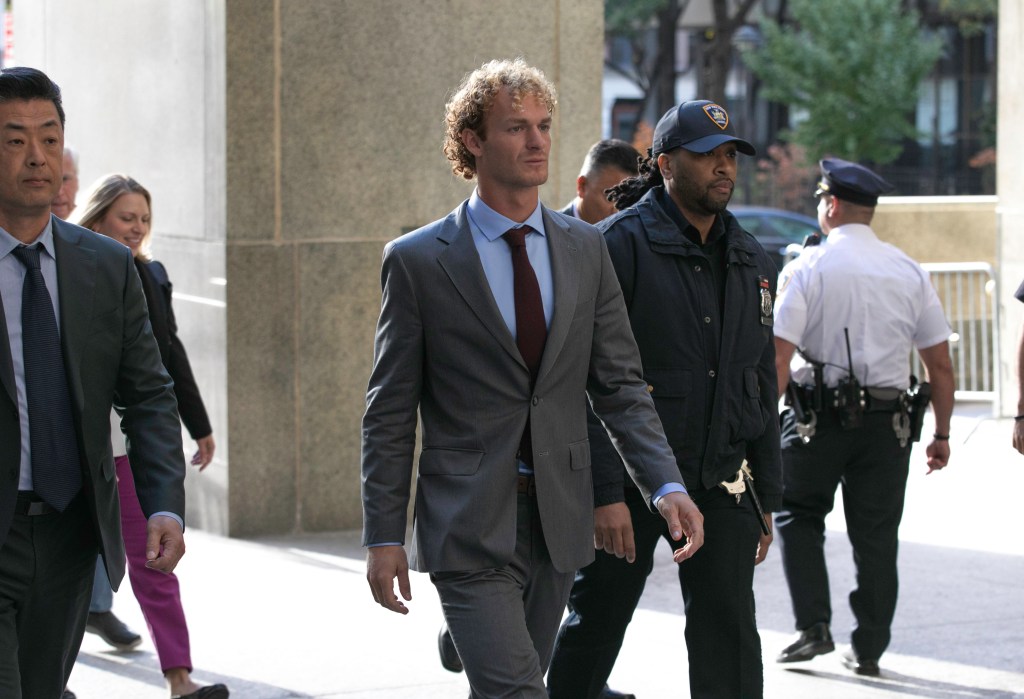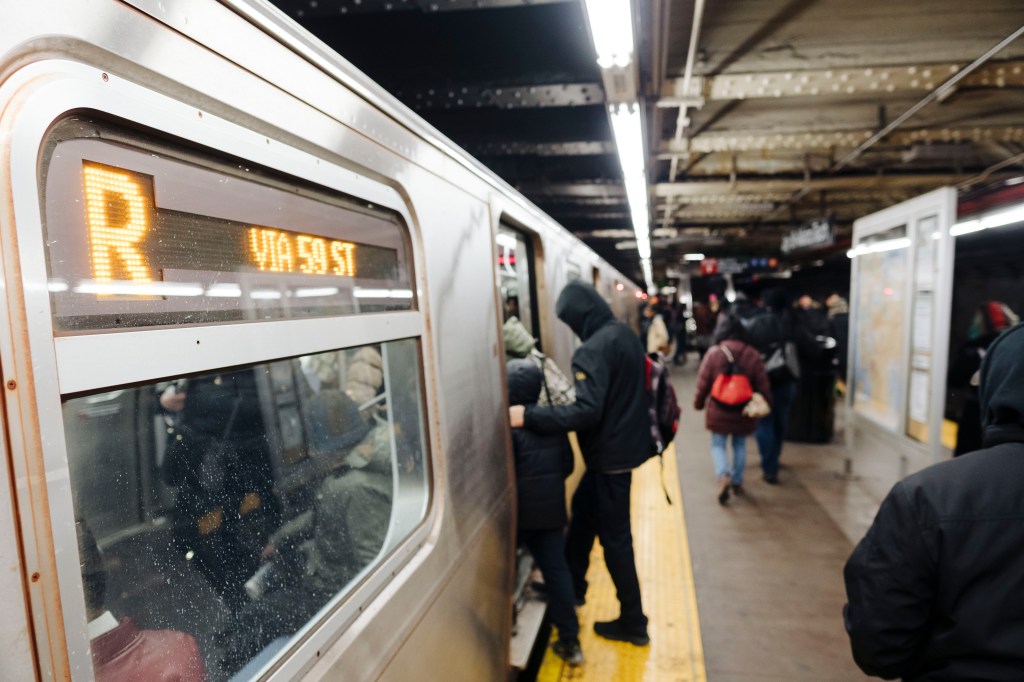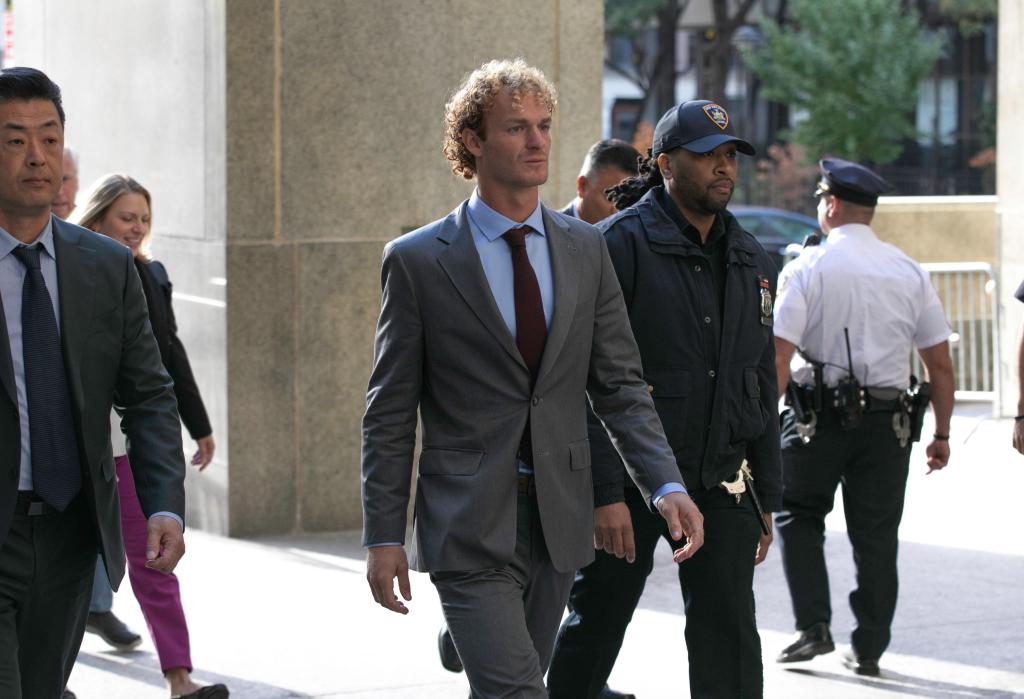Daniel Penny needs a subway-riding jury — and he may not get one
What does a “jury of his peers” look like for Daniel Penny, now on trial in Manhattan Criminal Court for manslaughter and criminally negligent homicide in the choking death of Jordan Neely on an F train in May 2023?
It’s common for trial consultants to parse potential jurors by race, age and gender. But in this case, the real divide in the jury pool is transit: who takes the subway every day, and who doesn’t.
Would a disproportionate “work-from-home” jury help Penny or hurt him?
Last Monday, Judge Maxwell Wiley invited 450 or so potential jurors into his courtroom, giving each batch of 90 a standard spiel about the difficulties of serving on a six-week trial.
By Friday mid-morning, he’d winnowed the group down to 149, and that afternoon began to specifically question them to make sure the panel can be fair.
Wiley took a mild approach with the 450-person group when asking them if they were able to serve.
Specifically, he told the jury pool that “if you work for an hourly wage, and you know your employer won’t pay you for more than three absent days, let us know now.”
That’s because the state pays jurors only $40 daily. So if your employer won’t pay you while you’re absent — by law, your employer is required to pay for only three days’ worth of jury duty — you’re losing money.
And the people least likely to be paid for days off are people on hourly wages, not salaries.
Fair enough, but this disproportionate self-selection of hourly workers out of the jury pool has an unintended consequence, and a unique implication for the Penny trial: It likely removes those who take the subway every day, relative to those who don’t.
Consider: Subway ridership last Wednesday, the day jury selection began, was just 75% of the pre-COVID normal.
The people who take the subway rarely now, relative to 2019, are more likely “work-from-home” or “hybrid” workers.
Those who are on the subway every day, by contrast, are grocery clerks, nurses’ aides, security guards — hourly-wage workers who, the judge acknowledged, would have a harder time serving on a long trial.
Plus: Many white-collar, salaried Manhattanites have always walked to work, rather than going underground on a daily basis.
In 2010, 31% of Manhattan residents living below Central Park — median household income at the time, $104,512 — walked to work.
Only 12.7% percent of Manhattanites who lived above Central Park — median household income, $46,510 — walked to work.
What group does Penny fall into?
He told The Post in May, soon after he put Neely in a chokehold on the F train in order (as he says) to protect other passengers from the erratic man’s threats of violence, that he would “take the subway multiple times a day.”
If true, he was much like the average hourly worker, frequently exposed to incessantly rising underground violence and disorder since late 2019.
Get opinions and commentary from our columnists
Subscribe to our daily Post Opinion newsletter!
Thanks for signing up!
Through August this year, violent subway felonies, though lower than during and just after the pandemic, are 19% higher than in 2019.
Felony assaults are 56% higher, and the underground murder level since 2019 is up five-fold.
The more often you take the subway, and the longer your trip, the more often you’ll encounter the crazy stuff that exploded in 2020 — including people who look like they’re about to become violent at any moment.
I experienced this myself as I took the subway back and forth regularly within Manhattan to attend Penny’s trial last week.
By Day 4, I’d witnessed an uncomfortable incident: a woman who threatened to stab another woman, a stranger, on the northbound 6 train, just south of Union Square.
“Keep talking, keep talking, say something, and get poked,” she screamed during a verbal dispute.
Nobody got stabbed — but this stuff puts people on edge.
That stress doesn’t give you an excuse to kill someone, of course.
What the jury will be considering, legally, is whether Neely posed an imminent threat, and if so, whether Penny’s actions in neutralizing that threat were justified.
Yet we all bring our personal perspectives into the jury box.
When the 149 potential jurors returned for deeper questioning Friday, the judge asked a question that may compensate for the initial distortion: how often each of them takes the subway.
And it was surprising how many don’t. Of the initial 16 people questioned, five said they never or rarely ride the rails.
The same flexibility that lets them avoid the subway as they work via laptop may be what allows them to serve on a subway-homicide jury.
Nicole Gelinas is a contributing editor to the Manhattan Institute’s City Journal.








